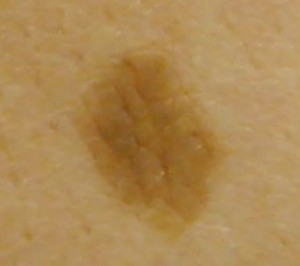Seborrhoeic warts/keratoses
Seborrhoeic keratoses are also known as seborrhoeic warts, and as basal cell papillomas. Seborrhoeic keratoses are very common, harmless, often pigmented, growths on the skin which may be associated with exposure to sunlight.
These unsightly marks are often considered to be a nuisance as they can itch, become inflamed, and catch on clothing. Many people dislike the look of them, particularly when they occur on the face.
Dr Doron Boone has removed countless seborrhoeic warts with excellent cosmetic results.
If you are concerned about the presence or appearance of your seborrhoeic warts and would like to have them removed, please either call us on the appointments number above or complete the contact form and tick the minor surgery check box. We will be happy to arrange an appointment or a call-back with Dr Doron Boone at your convenience.
Seborrhoeic keratoses (warts) are benign and are caused by a build-up of ordinary skin cells and affect 30% of the population over the age of 40 years and 75% of people over the age of 70. They may also be found in younger people. – Some people will have only a few seborrhoeic keratoses, while others will have large numbers.
Despite their name, seborrhoeic keratoses are nothing to do with sebaceous glands or viral warts and are not infectious and do not become malignant.
Seborrhoeic keratoses have a rough surface, and range in colour from golden brown to mid brown to almost black. They are most common on the trunk but are also common on the head, face and neck. They can affect anyone, but on dark- skinned people they can also appear as multiple small dark brown or black bumps, especially on the face and the neck; in such a case this is called Dermatosis Papulosa Nigra.
Small flat seborrhoeic keratoses can often become more raised and larger as the years go by. Their size varies from less than 1 cm to several centimetres across. Many appear to be stuck onto the surface of the skin; however some may look like small pigmented skin tags.
Once present, they usually stay, and new ones often appear over time.
Seborrhoeic keratoses often cause worry by becoming inflamed or bleeding. If there is any doubt, a punch skin biopsy can be done to confirm the diagnosis.
Individual seborrhoeic keratoses can be treated successfully as below. However, new seborrhoeic keratoses may continue to appear.
How can seborrhoeic keratoses be treated?
Although most seborrhoeic keratoses need no treatment as they are harmless and cause no symptoms; for those who wish to have some or all of their keratoses removed we offer a very effective treatment with electrosurgery and curettage under local anaesthetic at our clinic. We can treat single or multiple lesions in one session.
Sometimes after treatment, particularly with large keratoses, there can be a degree of pigment change of the skin of the area affected.


